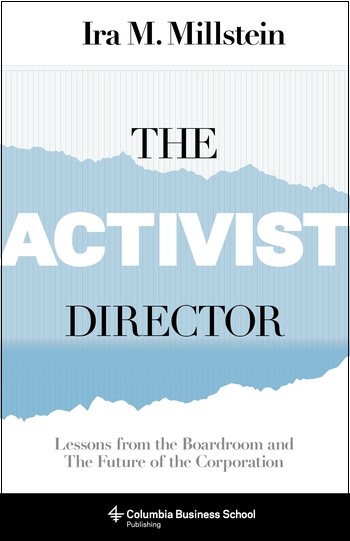Sheldon Krimsky on What's at Stake in Our Use of Stem Cells
“Regenerative medicine is … where science and technology can surpass the limits of natural human evolution … in the process, it is breaking new ground in dealing with the moral issues raised by medical science and technology.”—Sheldon Krimsky
We conclude our week-long feature on Stem Cell Dialogues: A Philosophical and Scientific Inquiry Into Medical Frontiers, by Sheldon Krimsky, with an excerpt from the epilogue. In the epilogue Krimsky discusses what’s at stake in our future discussions about and application of stem cell research:
While I was researching the ethical and scientific debates on stem cells for Stem Cell Dialogues, I was acutely aware of the polarized positions. However, I became more interested in the middle ground of controversy, where honest, nuanced discussion and disagreement take place. The Dialogues were created to illustrate how evolving science can reframe the debate and create a realignment of positions.
The stem cell controversies represented in this book exhibit some uniquely American ideas about the role of the state, the right to engage in research, and the cultural divide between science supported by public funds and science supported by private funds. It was certainly not the first time that the public and private sectors were allowed to resolve ethical issues on their own terms. During the recombinant DNA controversy in 1975, the NIH established guidelines for transplanting genes from one organism to another that applied exclusively to federal grant recipients. Scientists in the private sector were ostensibly unregulated. The issues at stake were the potential risks of broadening the range of an infectious agent or introducing animal cancer genes into the human gut bacteria. Congress did not see fit to create a single system of regulation or oversight.
A similar situation occurred with human gene therapy, for which a federal oversight committee reviewed research protocols funded by the NIH. The private sector was under no legal obligation to follow the same procedures. This bifurcated model was repeated with respect to stem cells. George Bush’s stem cell policy applied exclusively to federal grantees. Others funded by states or the private sector could use any available embryonic stem cell lines.
I have tried to capture in the Dialogues the excitement and optimism within the scientific community about the role stem cells would someday play in treating human disease. Whether it was through embryonic stem cells, induced pluripotent stem cells, or nuclear transfer, the enthusiasm among cell biologists was palpable. For example, in 2009 Amabile and Meissner wrote, “Recent developments provide optimism that safe, viral free human iPS cells could be derived routinely in the near future. . . . The approach of generating patient-specific pluripotent cells will undoubtedly transform regenerative medicine in many ways.” Their only caveat is that it may take years before all the obstacles to applying stem cells safely and effectively for therapeutic uses are addressed. One of the leading stem cell scientists, Shinya Yamanaka, wrote in 2012, “I believe that iPSC technology is now ready for many applications including stem cell therapies.”
Scientists know the stakes are high. Consider just one area—end-stage liver disease, which can be caused by cancer (heptacellular carcinoma) or cirrhosis (most commonly caused by alcoholism, hepatitis B, and hepatitis C). Other than liver transplants, most treatments are not very effective. There are about 18,000 patients in the United States on the waiting list for a liver transplant and only about 4,000 donated cadaver livers available for transplant per year. If part of the damaged liver is removed and replaced by stem cell-derived liver cells (hepatocytes), the liver can be regenerated and victims of end-stage liver disease will have a chance to survive without transplants.
There are two distinct parts of the stem cell research translational program: regenerative medicine and personalized medicine. The Dialogues have emphasized both elements. Regenerative medicine is the replacement of damaged human tissue and cells with stem cell-derived differentiated cells. Personalized medicine involves using the diseased person’s own adult cells, whether adult stem cells or somatic cells induced to take on an embryonic stem cell-like state, to carry out the regenerative functions. “The application of patient-derived iPSC cells for cell therapy has the advantage of using genetically identical cells, which can be introduced into the patient without the need for immunosuppression.” As explained in the introduction, the ideal of modern regenerative medicine is to use the biological resources of one’s own body to repair itself or replace worn-out or diseased parts, such as damaged heart or brain cells. This is where science and technology can surpass the limits of natural human evolution—and, some would argue, even aging. Of course, the scientific and medical impulse to transcend every boundary of illness and aging will eventually confront the societal and global impacts of increasing human longevity. Using stem cells for regenerative medicine is simply the latest scientific breakthrough seeking to reach that goal; in the process, it is breaking new ground in dealing with the moral issues raised by medical science and technology. It is worth recalling the words of evolutionary biologist J.B.S. Haldane in his 1928 Conway Memorial Lecture on science and ethics, that “by complicating life, science creates new opportunities of wrongdoing; by altering our worldview, it may lead us into one form or another of ethical nihilism; it can never do us harm by pointing out to us the consequences of our actions.”




